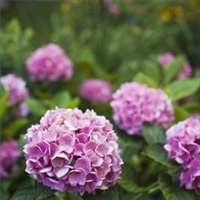Hydrangea shrubs produce vibrant flowers in mid-summer or early autumn. These plants need moderate water and partial shade, so they are hardy even when grown inside with indirect sunlight. An outdoor hydrangea requires specific pruning based on the time of year, possible storm damage and other factors, but pruning inside is a little different. An indoor hydrangea may be operating on a difference cycle, since cold snaps do not trigger plant dormancy indoors. For indoor pruning, pay attention to the plant’s actual cycle rather than the calendar date.
Difficulty: Moderately Easy
Instructions
Things You’ll Need:
- Pruning shears
- Composting bin
-
Prune occasional pet-damaged branches year-round, cutting them off at the point where they join the main stalk. Whereas wind storms and winter snows cause unnatural breakage outdoors, indoor concerns typically are limited to accidental breakage from pets or children. If a branch is splintered and breaking off, it’s best to remove it immediately. A damaged branch will continue to compete against healthy branches for nutrients.
-
Deadhead the plant when the flowers naturally wilt, clipping the flowers just beneath the blossom. Hydrangea shrubs usually produce flowers during the summer months, but an indoor hydrangea could produce flowers at any time during the year. Flowers last about three to four weeks, so expect a natural wilt to occur about a month after the shrub blossoms.
-
Trim back most of the plant’s new growth about three months after the flowers are deadheaded. At this time, an indoor hydrangea will be emerging from a state of dormancy. When coming out of dormancy, "hard cuttings" will give the hydrangea shrub room for new growth. Hard cutting once each season involves pruning away new branch and bud growth, leaving large, main branches intact. A mature hydrangea plant will barely grow if it isn’t cut back at the beginning of each growing season.
-
Remove pruned leaves and branches from the indoor growing pot after pruning. Pruned foliage is useful for composting bins, but when the raw foliage blankets an indoor pot, it negatively impacts drainage and creates unpleasant odors.


Deprecated: strpos(): Passing null to parameter #1 ($haystack) of type string is deprecated in /home/agriviek8Qv/agriviet.net/public_html/wp-includes/comment-template.php on line 2522